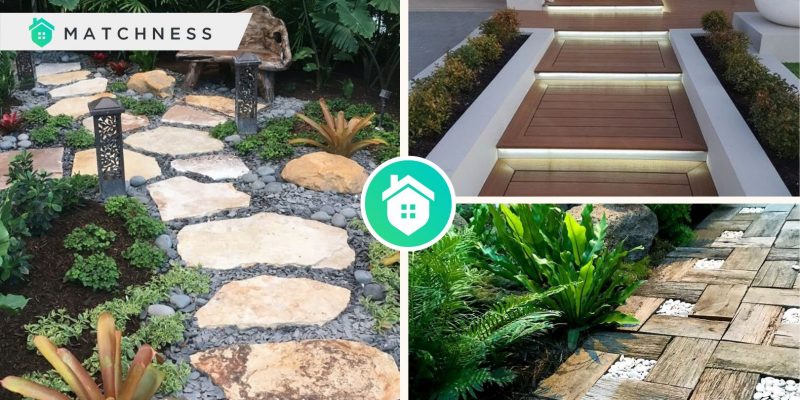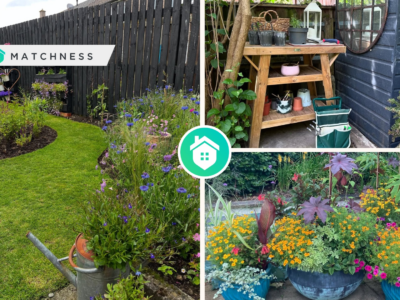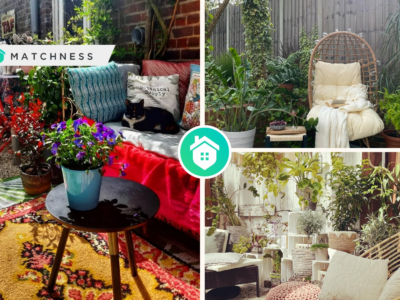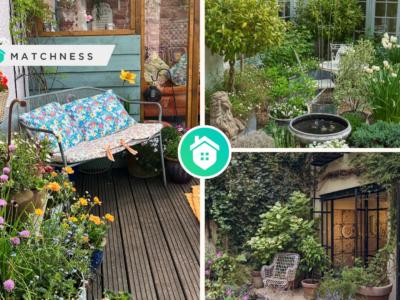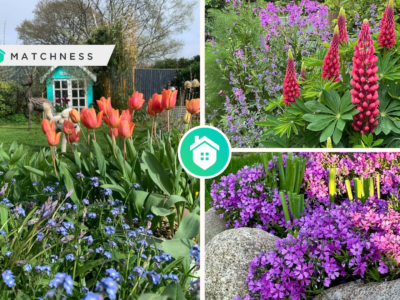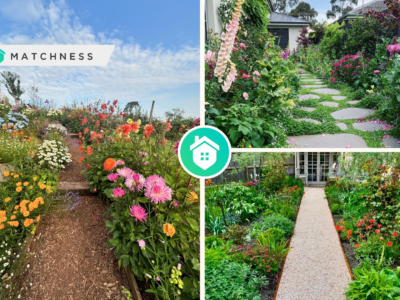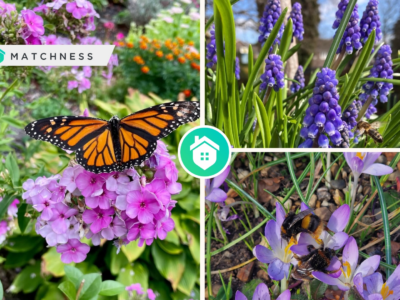Creating a garden pathway is a delightful way to enhance the aesthetic and functional aspects of your garden. A well-designed pathway not only guides visitors through your garden but also highlights its beauty and ensures easier access to different areas. By thoughtfully designing and constructing your garden pathway, you can transform your outdoor space into a charming, functional, and inviting environment. A well-crafted path not only enhances the beauty of your garden but also makes it more accessible and enjoyable for years to come.
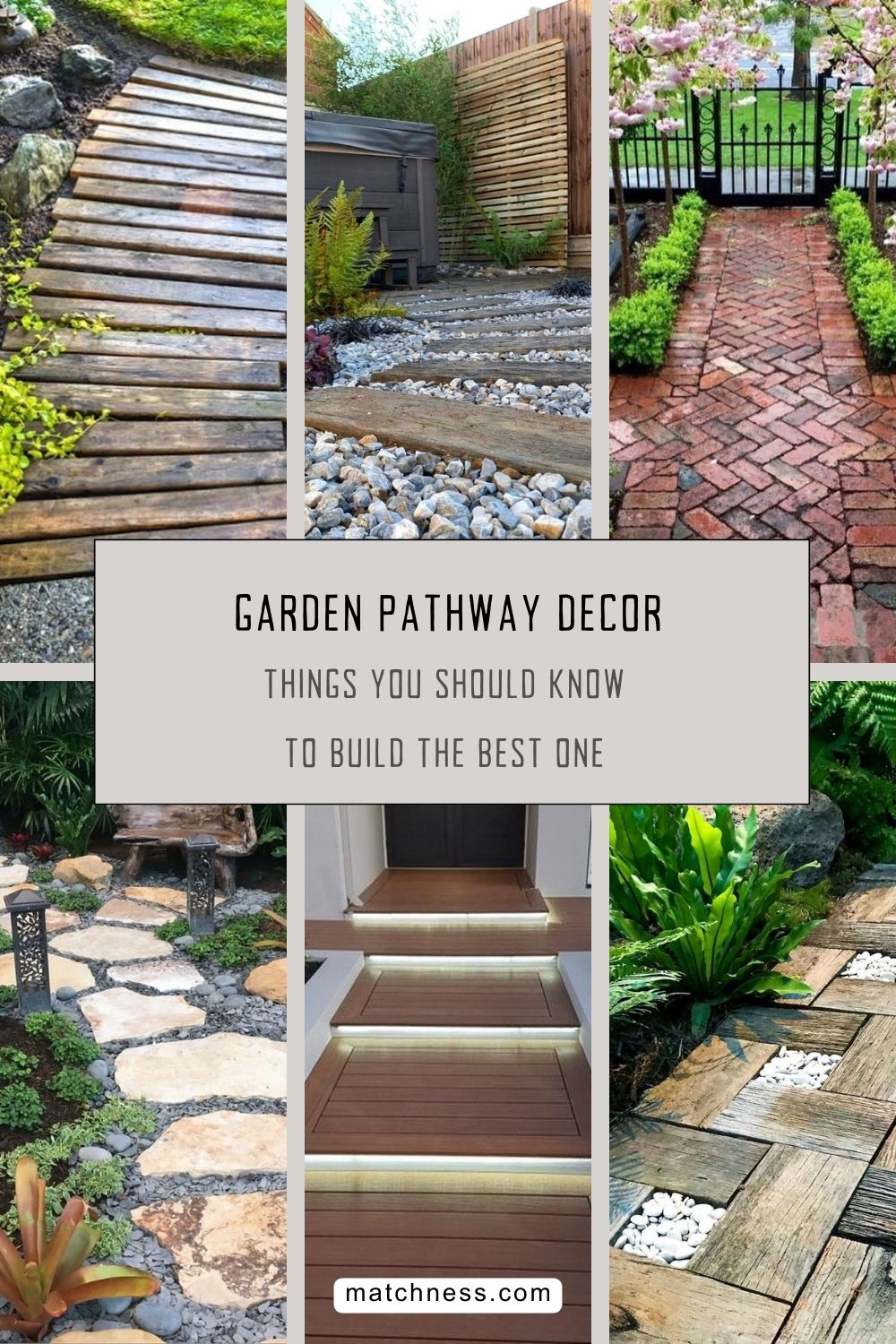
Here’s a comprehensive guide to designing and building a garden pathway.
Designing Your Garden Pathway
Purpose and Placement
1. Functionality: Determine the primary function of your pathway. Is it to provide a direct route from one point to another, or to invite a stroll through your garden?
2. Flow: Plan the pathway to complement the natural flow of your garden. Consider curving lines for a more organic feel or straight lines for a formal look.
3. Access: Ensure the path leads to key areas such as seating spots, garden beds, or focal points like a pond or statue.
Material Selection
1. Gravel: Affordable and easy to install, gravel paths suit informal gardens. However, they can be less stable underfoot.
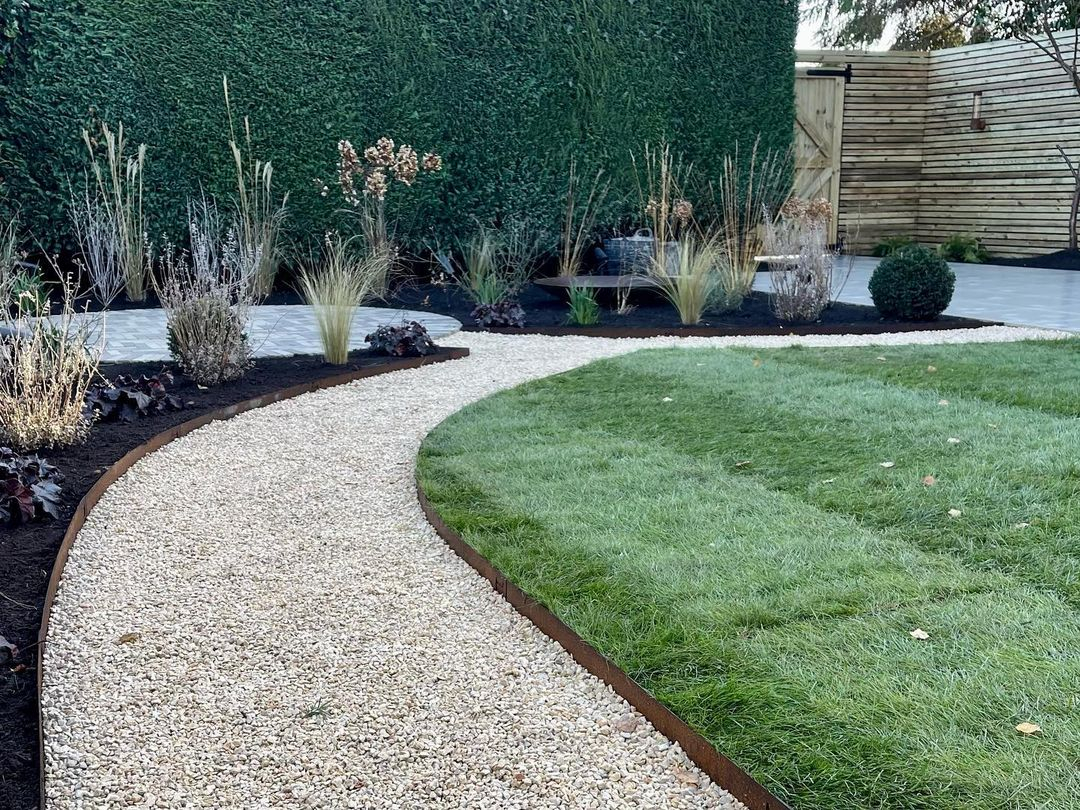
This one looks simple but gravel can surely create an interesting feeling when we step on it. You can see it here where the pathway with gravel has a natural look as if it is in real nature. Gravel Pathway from @theidealgarden
2. Stone: Natural stone, such as flagstone or slate, offers durability and a timeless look. It’s ideal for both formal and informal settings.
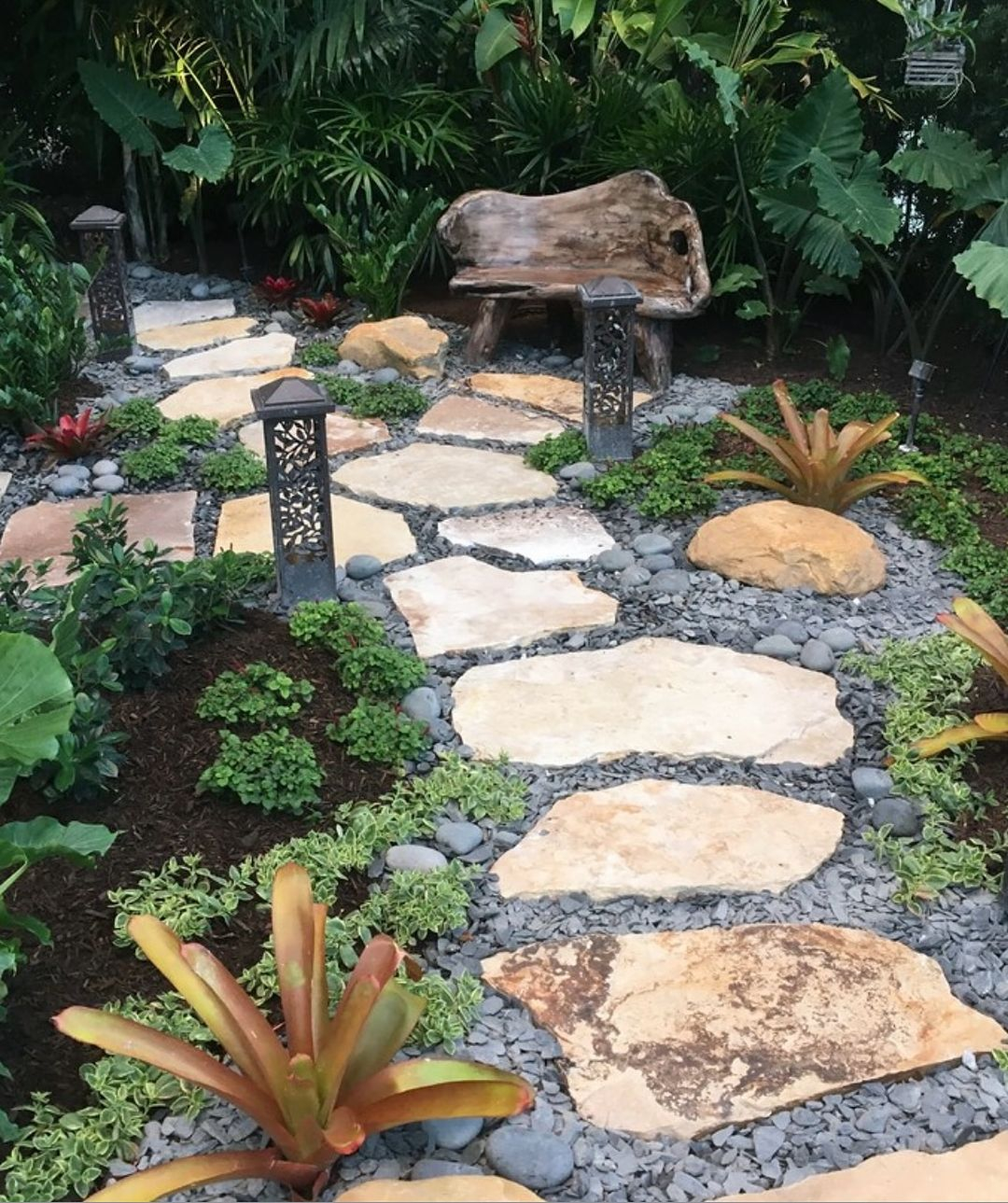
The stone has a unique shape especially when you let it have its natural shape like this. No need to worry that the design won’t be seen as orderly because this one is the aesthetic value of the stone that can be proper for the pathway. Stone Pathway from @matthew_giampietro
3. Brick: Adds a classic touch and is suitable for more formal garden designs. It provides a sturdy, long-lasting surface.
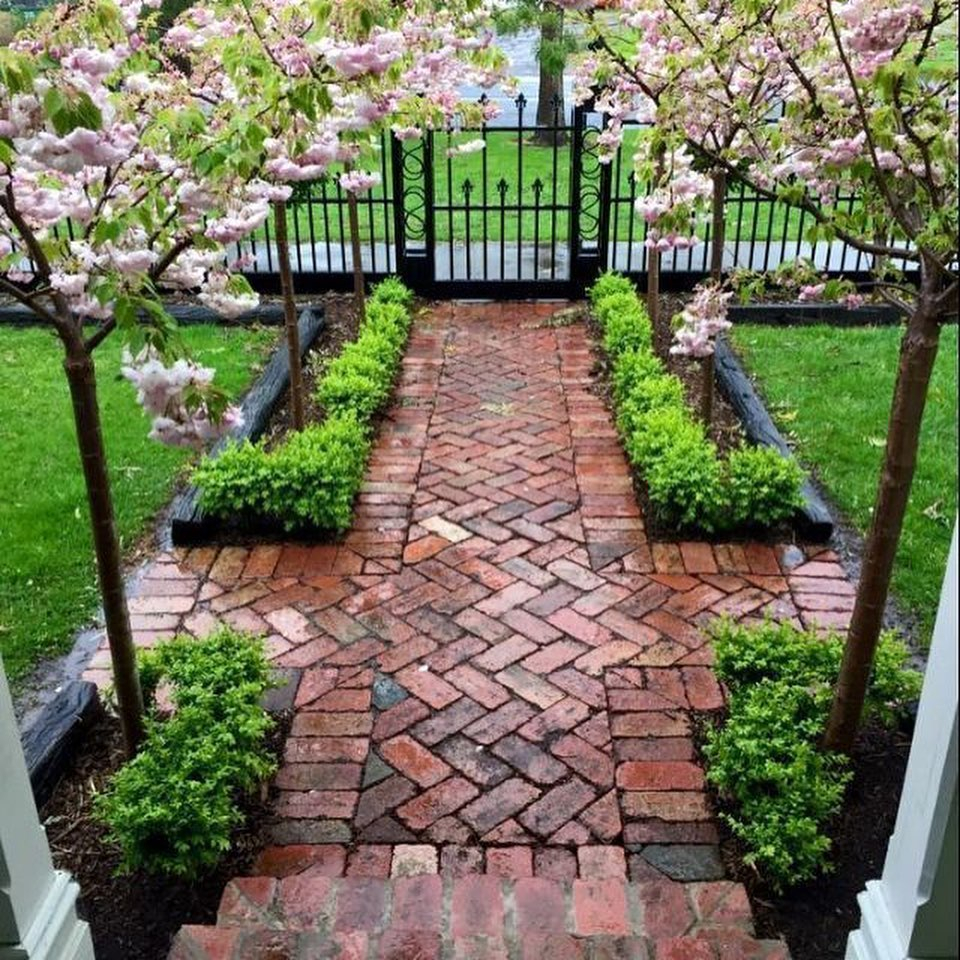
As you can see here, the interesting thing about the brick is its ability to be arranged into any design. Here, the brick is arranged in varied shapes which becomes the plus value of this pathway. It is really aesthetic and impressive. Brick Pathway from @thatchcottagereno
4. Wood: Wooden paths, like those made from timber or wood chips, blend well with natural surroundings but require more maintenance.
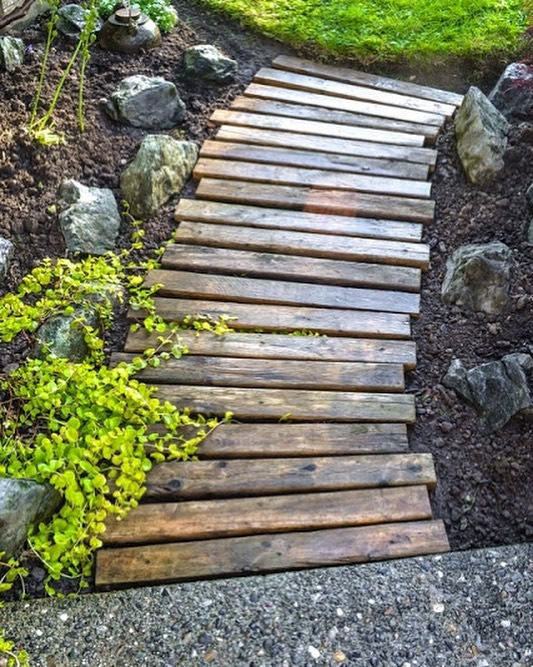
The wood installation is quite easy but it is proper for sure. It has a special impression which is warm and inviting. Look at how natural it looks like. However, make sure that you use the best wood quality. Wooden Pathway from @funkyjunkinteriors
Width and Edging
1. Width: Standard garden pathways should be about 3 feet wide to allow comfortable passage. Adjust width based on the garden’s scale and usage.
2. Edging: Use materials like bricks, stones, or metal to define the pathway edges. Edging keeps the path materials in place and prevents grass or plants from encroaching.
Building Your Garden Pathway
Preparation
1. Layout: Mark the path’s course with stakes and string or a garden hose. This helps visualize the final look and make adjustments if necessary.
2. Excavation: Dig out the path area to a depth of about 4-6 inches, ensuring a stable base for your materials. Remove any grass, roots, and debris.
Base Layer
1. Foundation: Lay a base of crushed stone or gravel about 2-3 inches deep. Compact it using a tamper to create a solid foundation. This step is crucial for preventing future settling or shifting.
2. Sand Layer: For pavers or bricks, add a layer of sand (about 1 inch thick) over the base. This helps with leveling and setting the materials.
Laying the Pathway
1. Placement: Begin placing your chosen pathway material, starting at one end and working your way to the other. For stone or brick, fit the pieces snugly together, and use a rubber mallet to tap them into place.
2. Leveling: Ensure each piece is level with the surrounding ones. Use a level and add or remove sand as needed to achieve an even surface.
3. Filling Gaps: Once all materials are laid, fill the gaps between them with sand, gravel, or soil. Sweep the filler material into the joints and compact it.
Finishing Touches
1. Edging: Install your chosen edging material to secure the pathway’s sides. This adds a polished look and keeps the pathway intact.
2. Planting: Enhance the pathway’s edges with plants or flowers. Low-growing, creeping plants can soften the path’s edges and blend it seamlessly into the garden.
3. Maintenance: Regularly check the pathway for any displaced materials, weeds, or maintenance needs. Keep the path clean and clear to ensure longevity and appeal.
Design Inspiration and Ideas
1. Themed Pathways: Design your pathway to reflect a theme, such as a rustic woodland trail with natural stones or a sleek modern path with geometric pavers.
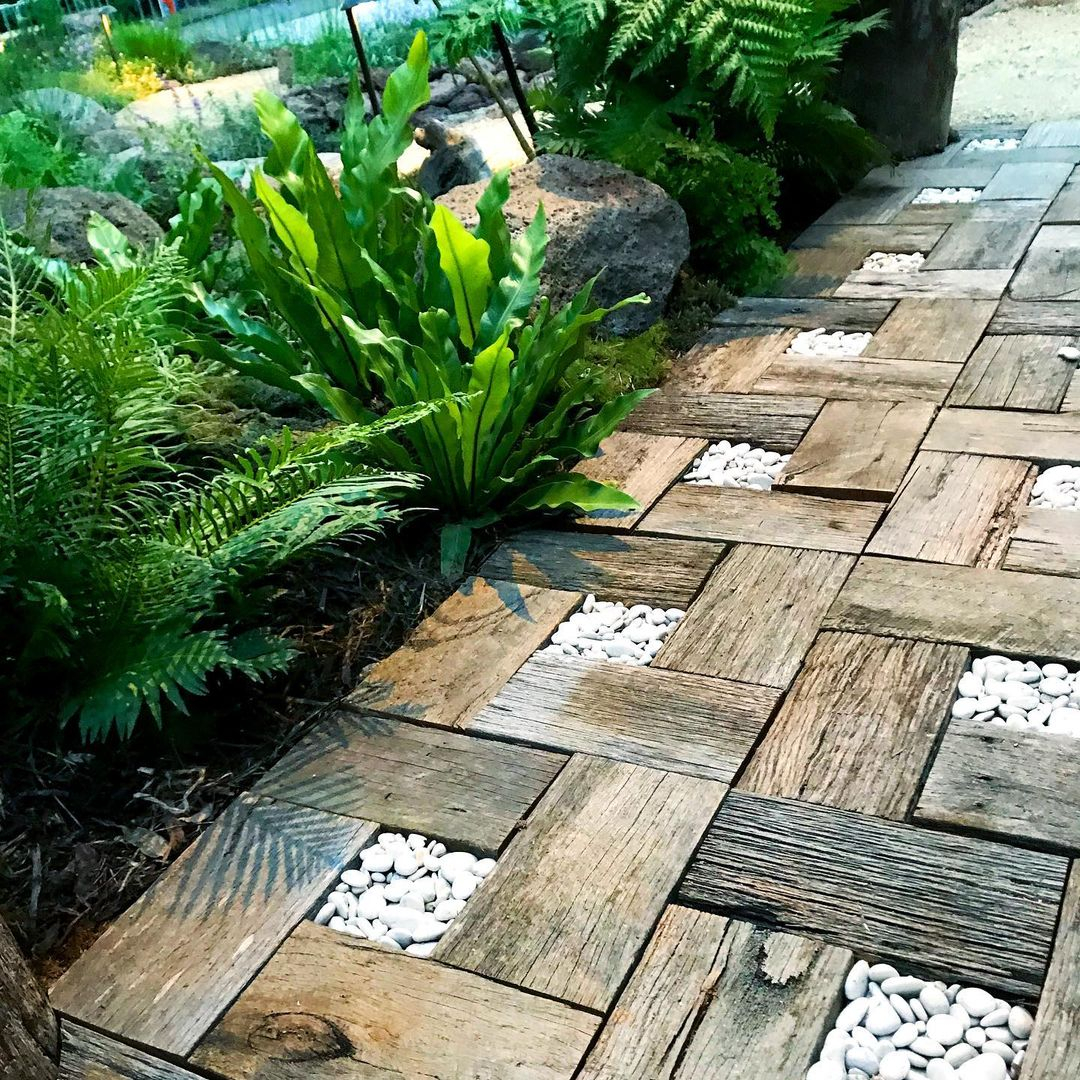
This pathway is really adorable. As a whole, it has a rustic style which is created with the natural finish wood material. The wood is then arranged to have a good pattern. After that, the gravel is added for a more special impression. Rustic Style from @stem_emmalinebowman
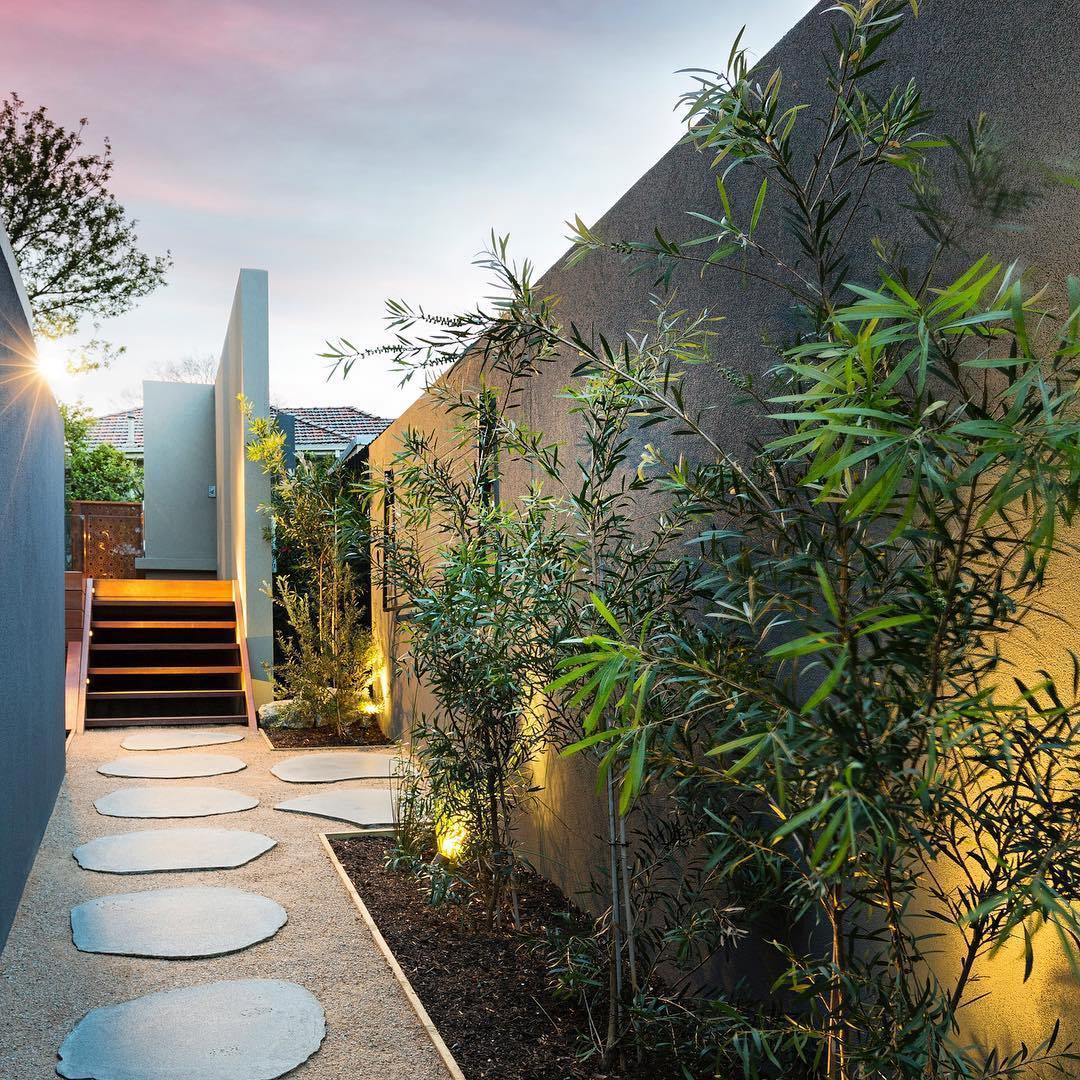
This pathway is made of natural materials which are stone and gravel. But, this pathway has a modern look with its sleek and clean finish. Even when has a material combination it has a simple impression. Modern Style from @the.modern.landscaper
2. Lighting: Incorporate solar or low-voltage lights along the path to create a magical evening ambiance and improve safety.
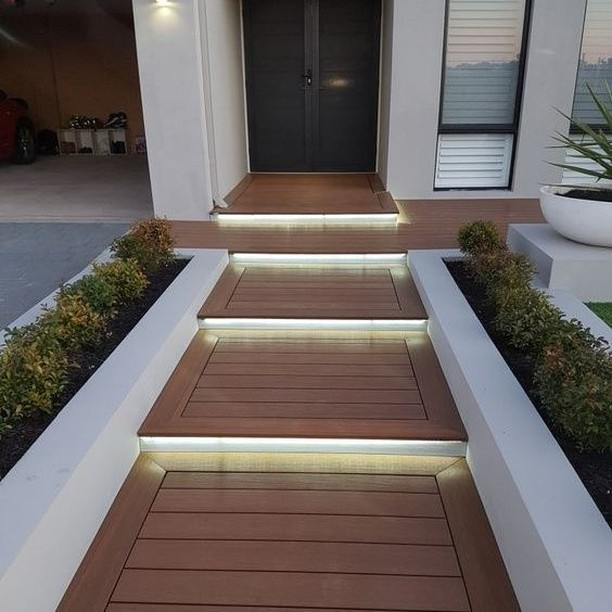
This pathway lighting is a kind of hidden lighting where the LED is installed under the edge parts of the pathway. It is possible because this pathway is created with stairs so that the LED can be hidden there. Pathway Lighting from @theoutdoorlook
3. Textural Contrast: Combine different materials like wood and stone for a unique look that adds interest and texture.
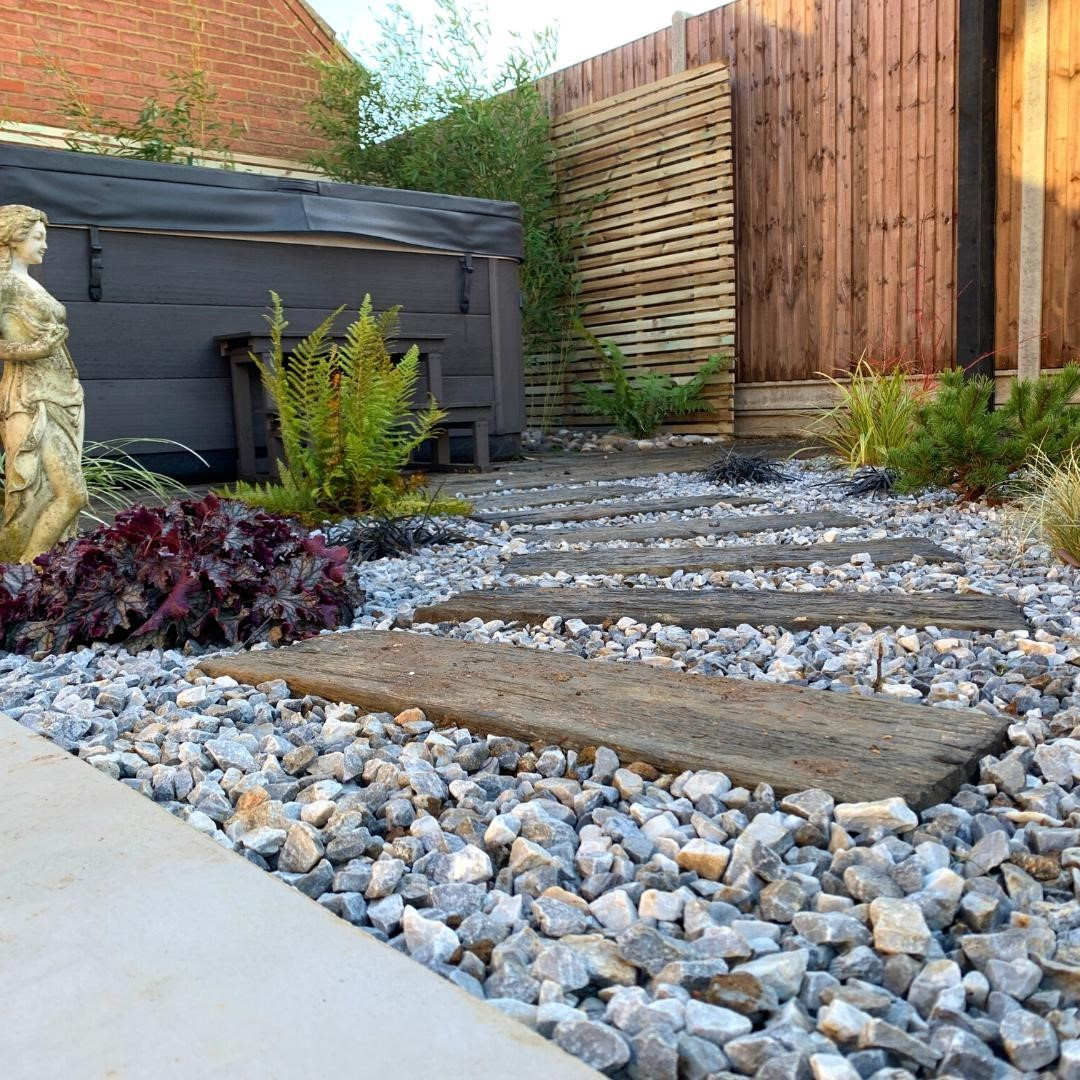
Both materials are from nature but it has different texture and appearance. That is why, the wood and gravel can such a great combination if you want to create contrast for your pathway. Contrast Material from @thegardenprojectco


